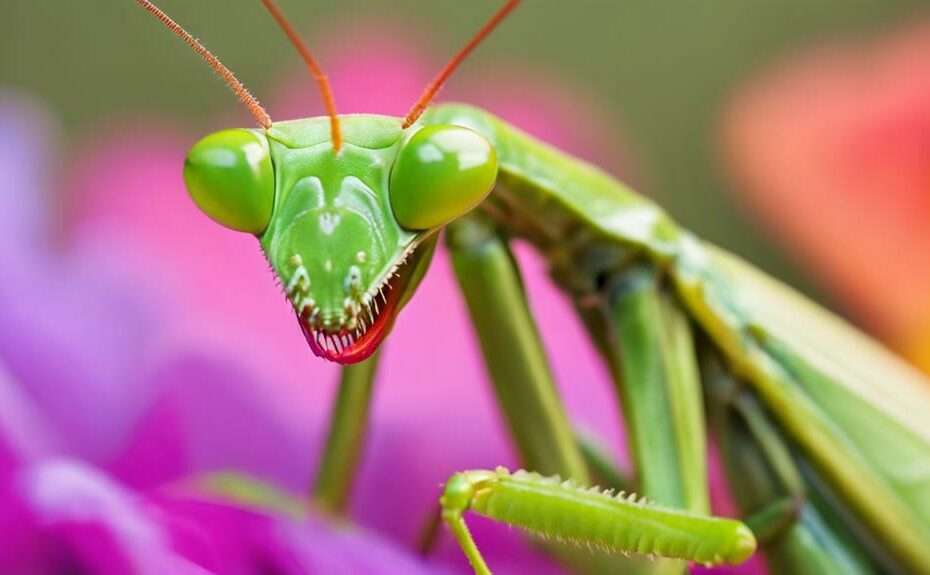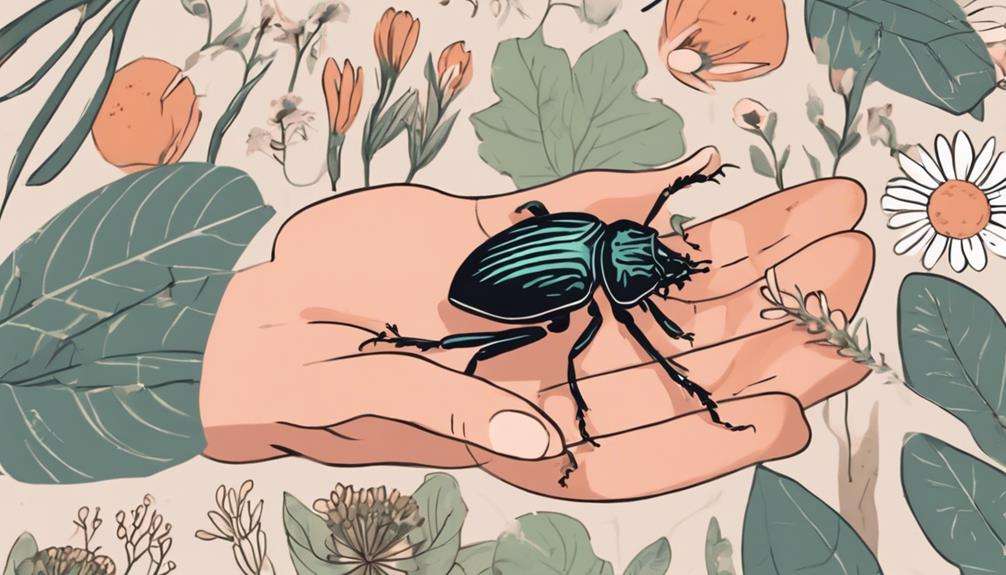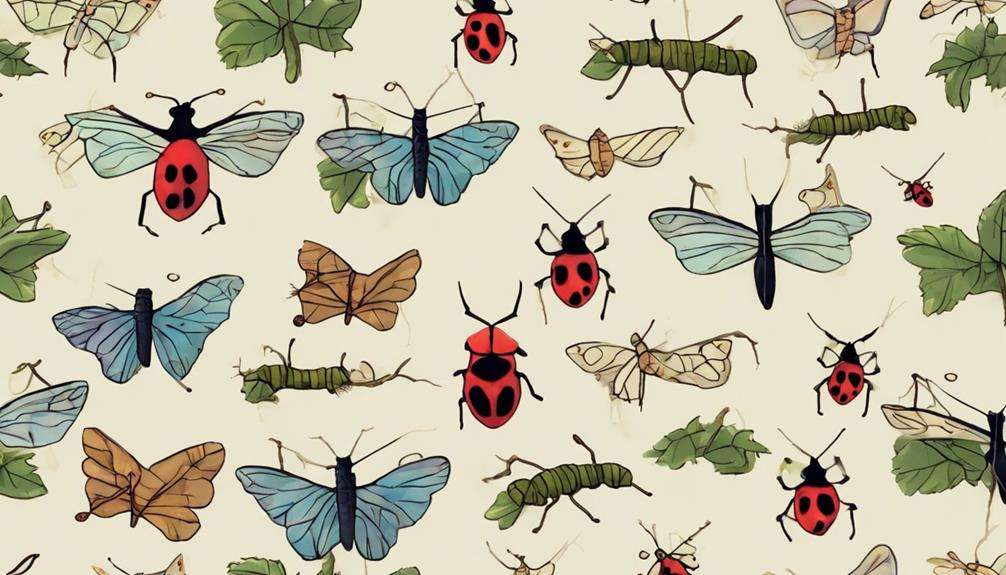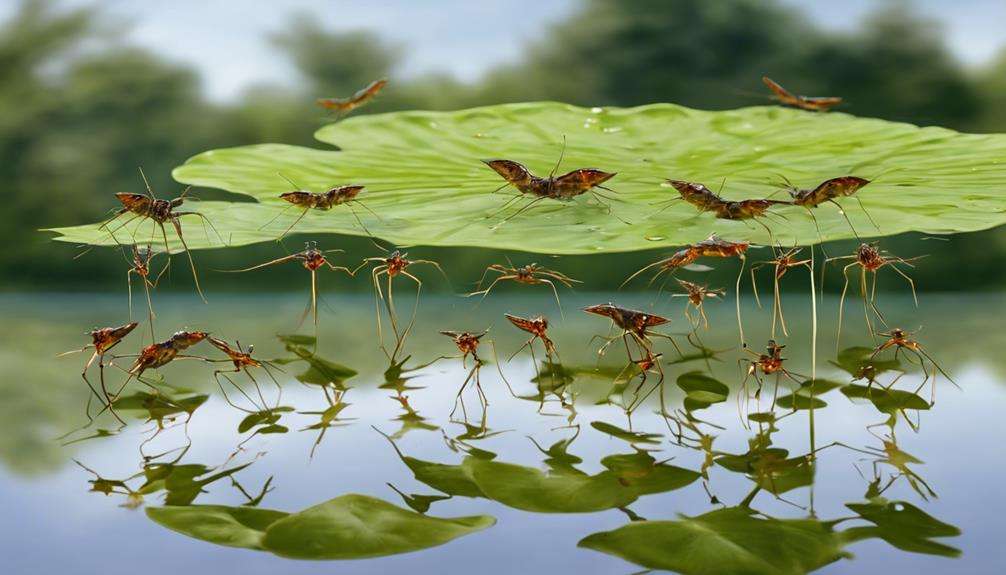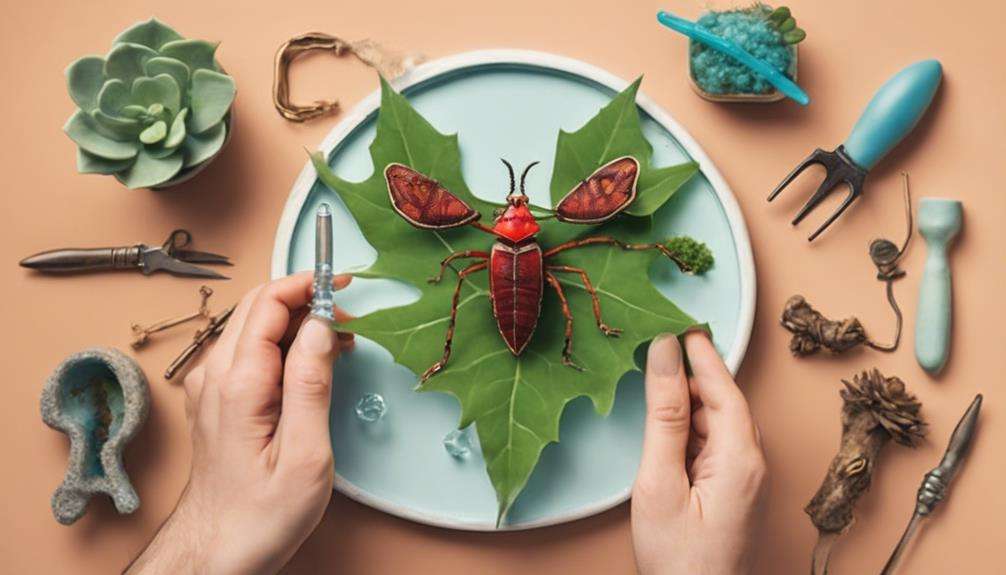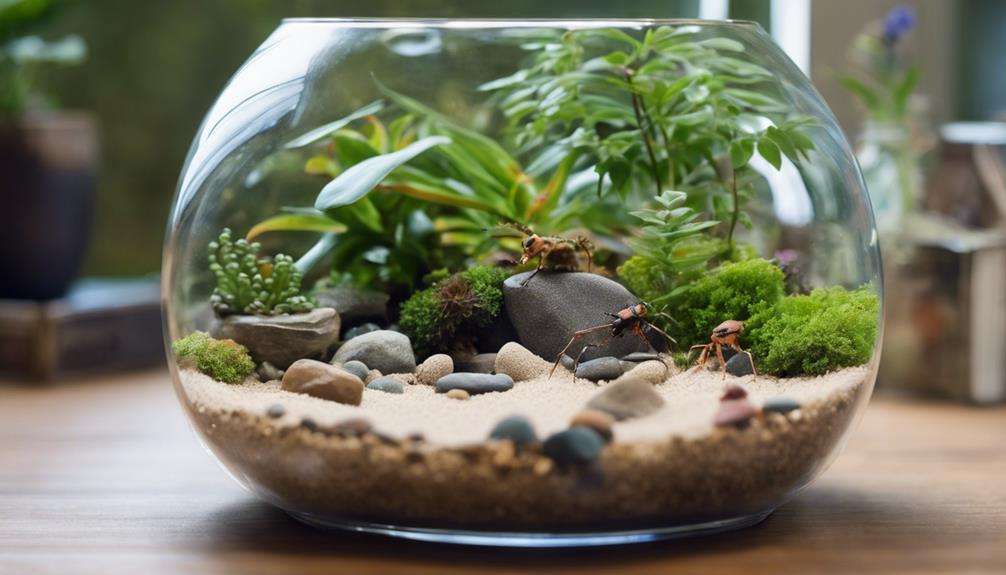Imagine stepping into the fascinating world of pet mantids, where each one is like a tiny mystery waiting to be unraveled. As a novice enthusiast, you may be intrigued by the quirks and charms these creatures possess. From their intricate camouflage techniques to their mesmerizing hunting strategies, pet mantids offer a glimpse into a captivating domain of the insect kingdom.
But what makes them truly stand out? Keep exploring to discover the unexpected allure of these quirky mantids and how they can bring a unique twist to your journey as a novice enthusiast.
Key Takeaways
- Engaging and educational experiences with low maintenance care.
- Distinct species like Ghost, African, Chinese, and Giant Asian Mantises.
- Minimal attention needed with unique characteristics and colors.
- Proper enclosure setup for comfort, enrichment, and well-being.
Unique Benefits of Pet Mantids
Discover the unique benefits of keeping pet mantids, an engaging and educational experience for novice enthusiasts. Praying mantises make excellent pets due to their enthralling predatory behavior and low maintenance care requirements.
These fascinating creatures come in a variety of species, each with its own distinct characteristics, colors, and sizes, offering a diverse range of options for enthusiasts to choose from.
One of the key advantages of having a mantis as a pet is their ease of care; they require minimal attention and are relatively simple to keep compared to other pets. Maintaining the proper humidity levels in their enclosure is essential for the well-being of these creatures, as they rely on adequate moisture for their survival.
Top Quirky Mantids for Beginners
When considering top quirky mantids for beginners, exploring the unique traits and behaviors of each species can enhance your experience as a novice enthusiast.
The Ghost Mantis (Phyllocrania paradoxa) stands out for its high humidity requirements, stunning appearance, and suitability for group housing.
African Mantises (Sphodromantis lineola) are excellent choices due to their low maintenance needs, adaptability to various environments, and omnivorous diet.
Chinese Mantises (Tenodera aridifolia) are popular among beginners for their calm demeanor, temperature tolerance, and easy availability in the pet trade.
For those looking for a larger option, the Giant Asian Mantis (Hierodula patellifera) is beginner-friendly, requiring minimal care while offering a variety of colors to choose from.
Each of these mantis species brings its own charm and characteristics to the table, making them fascinating companions for individuals starting their journey into the world of mantid keeping.
Exotic Mantids: Care Tips
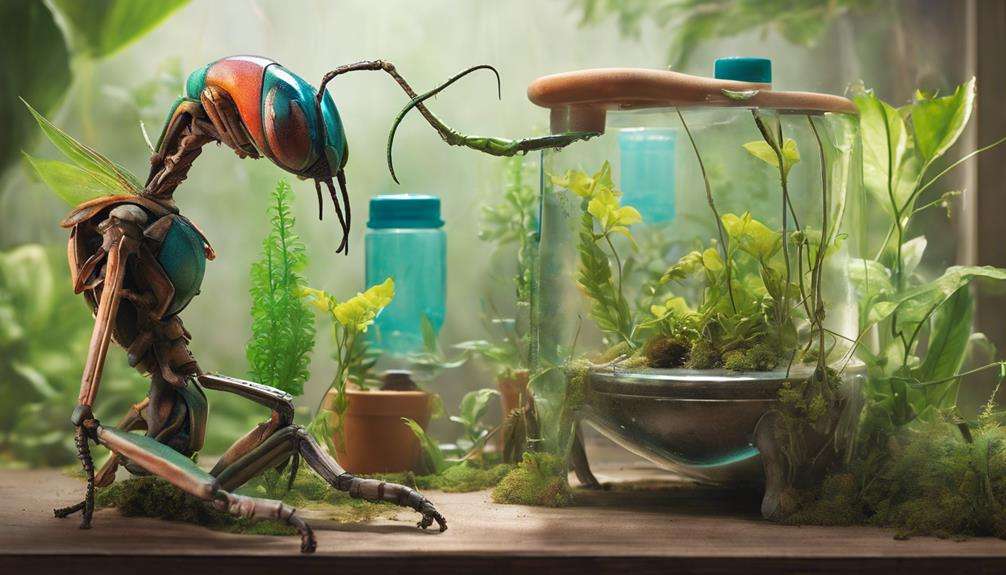
Moving from the discussion of top quirky mantids for beginners, understanding the distinct care requirements of exotic mantids is paramount to ensuring their well-being and longevity in captivity. Exotic mantids, varying in species, may have specific care needs that differ from more common mantids. One important factor to take into account is humidity levels; maintaining appropriate humidity is essential for the molting success of many exotic mantids, aiding in their growth and development.
Some exotic mantids, like the Devil's Flower Mantis, require a higher level of care due to their specific needs. As a responsible pet owner, it's crucial to research the care requirements of the exotic mantid species you choose to keep. Additionally, legalities surrounding the ownership of exotic mantids should be adhered to, ensuring compliance with regulations.
Responsible pet ownership extends beyond providing basic care; it also involves refraining from releasing non-native mantids into the environment, which can have detrimental effects on local ecosystems. By understanding and meeting the care requirements of exotic mantids, you can enjoy a rewarding experience while contributing to the conservation of these fascinating creatures.
Setting Up Mantid Enclosures
To create an ideal environment for your mantid, carefully select an enclosure that offers adequate ventilation to maintain air quality and prevent mold growth. Ventilation is essential for your pet mantid's well-being as it guarantees proper airflow within the enclosure.
Choose a substrate such as coconut fiber or peat moss to provide a comfortable and natural habitat for your mantid to thrive. Adding live plants not only enhances the aesthetic appeal of the enclosure but also offers hiding spots and creates a more natural environment for your mantid to feel secure.
When setting up the mantid enclosure, make sure that the size is at least 10 times the size of your mantid. This spacious environment allows for ample room for movement and hunting, promoting natural behaviors. Incorporate climbing areas and exploring spots to encourage physical activity and mental stimulation for your curious pet.
Handling Quirky Pet Mantids
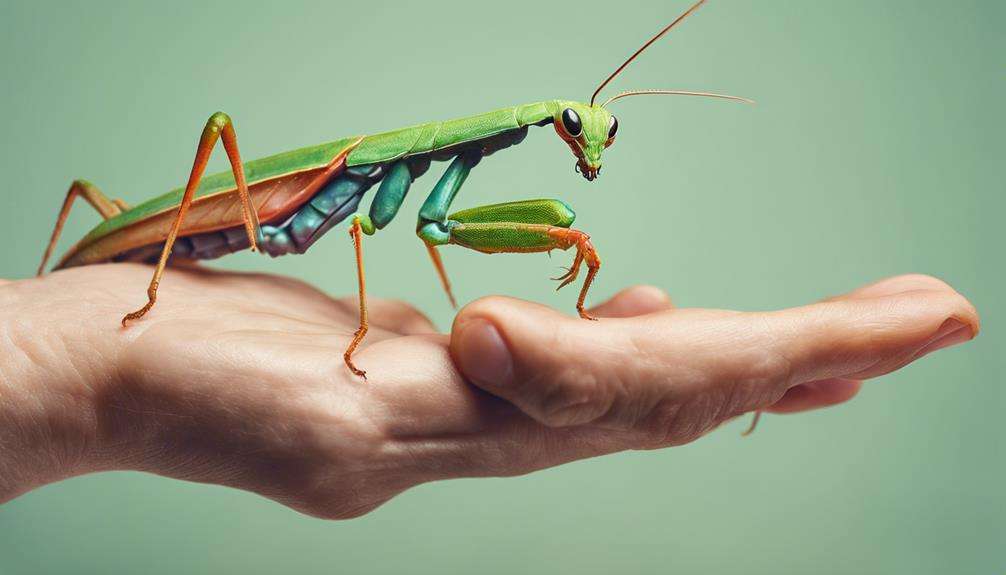
As you handle your quirky pet mantids, remember that gentle and careful approaches are important to avoid stressing these fascinating insects. Praying mantises, known for their unique appearance and predatory behavior, can become stressed if handled too frequently. It's essential to give them ample time to rest and acclimate to their surroundings. Understanding that some mantid species may tolerate handling better than others highlights the importance of individualized care.
During molting periods, when mantids shed their exoskeleton to grow, it's best to refrain from handling them as they're vulnerable to injury. Regular observation of your pet mantid's behavior and health is key to gauging their comfort levels with handling. By paying attention to subtle cues and changes, you can guarantee a positive interaction experience for both you and your pet mantid. Handling these creatures with care and consideration not only minimizes stress but also fosters a deeper connection through observation and respect for their natural behaviors.
Feeding Your Mantids
To maintain the health and well-being of your mantids, it's important to establish a feeding schedule that suits their species. Proper prey selection is vital to prevent nutritional deficiencies and potential harm to your mantids.
Employing effective feeding techniques and following expert tips will help you provide the best care for your pet mantids.
Mantid Feeding Schedule
Begin the feeding regimen for your pet mantids by offering appropriately sized live insects every 1-3 days, taking into account variations in species and individual size. It's important to adjust the feeding frequency based on your mantid's appetite and growth stage.
Overfeeding should be avoided to prevent health issues and obesity in your pet mantids. Monitor their feeding behavior closely to make sure they're consuming their prey adequately. Additionally, fasting before molting is common for mantids, so be prepared to adjust their feeding schedule accordingly.
Proper Prey Selection
Prey selection for feeding your mantids should prioritize safety and nutritional balance to support their growth and health. When choosing prey, make sure it's smaller than the praying mantis's head to prevent choking or injury during feeding.
Offer a varied diet including fruit flies, crickets, and small moths to meet their dietary needs. Avoid toxic insects or large prey that can harm your mantis.
Monitor their feeding behavior closely to confirm they're actively hunting and consuming their food. As your mantis grows, adjust the size of the prey accordingly to accommodate their increasing nutritional requirements.
Feeding Techniques & Tips
When feeding your mantids, make sure a diverse selection of live insects such as crickets, flies, or fruit flies to support their nutritional needs and overall health. It's important to avoid overfeeding to prevent health issues and obesity in your mantids.
Monitor their feeding behavior closely to make certain they're eating regularly. Remove any uneaten food promptly to maintain a clean and healthy environment for your mantids.
Consider fasting your mantids before molting to prevent complications during the molting process. By following these feeding techniques and tips, you can help your mantids thrive and stay healthy, making sure they lead a happy and active life in your care.
Identifying Mantid Stress
Identifying mantid stress can be important for maintaining the health and well-being of these fascinating insects. Stress in mantids can manifest through various behaviors such as excessive pacing or lethargy. Physical signs like discoloration, reduced appetite, or abnormal posture are also indicators of stress in these creatures. Changes in the environment, including temperature, humidity levels, or lighting, can greatly stress mantids. Moreover, handling mantids too frequently or roughly can cause stress and negatively impact their health. To reduce mantid stress levels, it's vital to provide hiding spots within their habitat, maintain appropriate temperatures, and make sure they've a suitable diet.
Careful observation of your mantid's behavior and physical condition is essential in identifying signs of stress. By creating a suitable environment, handling them gently, and providing a balanced diet, you can help keep your pet mantid healthy and happy. Remember, a stress-free mantid is more likely to thrive and display its natural behaviors in captivity.
Creating a Mantid Habitat

When setting up a habitat for your mantis, remember to select a terrarium with proper ventilation and ample space for climbing and exploring.
Maintain ideal temperature and humidity levels to guarantee your mantis thrives in its environment.
Incorporate decor and hiding spots like houseplants with thick foliage to mimic a natural setting and provide comfort for your mantis.
Habitat Essentials
To create an ideal habitat for your pet mantids, it's crucial to replicate their natural environment by incorporating live plants and providing suitable hiding spots for their comfort and security.
Live plants not only enhance the aesthetic appeal of the enclosure but also help maintain proper humidity levels necessary for the well-being of your mantids. Make certain your habitat offers climbing opportunities, as mantids are skilled climbers and will appreciate the chance to explore different levels within their home.
Use substrates like coconut fiber or peat moss to aid in maintaining humidity levels and provide a comfortable environment. Opt for plants with dense foliage and sturdy structures to offer hiding places and a sense of security for these fascinating creatures.
Temperature and Humidity
Replicating the natural temperature and humidity conditions is paramount when creating a habitat for pet mantids. For most mantis species, maintaining a temperature range of 75-85°F is ideal. However, some species may require higher humidity levels, typically around 60-70%, especially during molting for successful shedding.
To accurately monitor humidity levels, using a hygrometer in the mantis enclosure is essential. Creating a temperature gradient within the habitat enables pet mantises to regulate their body temperature effectively.
Ensuring proper humidity levels not only prevents dehydration but also plays an important role in facilitating healthy molting processes for pet mantises. By paying close attention to temperature and humidity, you can provide a comfortable and thriving environment for your mantis companions.
Decor and Hiding Spots
Enhance your mantis habitat with a variety of silk plants, branches, and rocks to provide essential climbing and hiding spots for your pet mantids. These decorations mimic their natural environment, offering both physical enrichment and mental stimulation.
Consider incorporating artificial or live plants like moss, ferns, or succulents to create a lush and natural atmosphere. Utilize substrate such as coconut fiber or peat moss to replicate the forest floor, providing ideal conditions for hiding and molting.
Small decorative elements like fake flowers or miniature figurines can add visual interest to the habitat. By carefully curating the decor in your mantis habitat, you can create a cozy and secure space that reduces stress and encourages natural behaviors in your beloved praying mantis.
Frequently Asked Questions
What Is the Best Mantis for Beginners?
For beginners, the Chinese Mantis is an excellent choice. They are readily available, easy to care for, and have a docile nature. Provide a well-ventilated enclosure, feed them insects like crickets, and avoid excessive handling.
What Is the Friendliest Mantis?
When considering Praying Mantis Personalities, the Ghost Mantis shines as one of the Friendliest Mantid Species. Its interactive behavior and cute encounters make Socializing with Mantids a joy for novice enthusiasts. Enjoy their peaceful nature!
Are Praying Mantis Good for Beginners?
Yes, praying mantises are excellent for beginners. Their feeding habits involve offering crickets, and during the molting process, handle them with care. Provide an appropriately sized cage setup for ultimate comfort. They fascinate with unique colors and camouflage techniques.
How Hard Is It to Keep a Praying Mantis as a Pet?
Keeping a praying mantis as a pet isn't difficult. Feeding schedules are important, guarantee a suitable enclosure setup, understand the molting process, practice gentle handling techniques, and provide environmental enrichment for a thriving mantis companion.
Conclusion
As you start on your adventure into the fascinating world of pet mantids, remember that these quirky creatures offer a unique and rewarding experience for novice enthusiasts.
Did you know that mantids have excellent vision, with some species having the ability to see in both visible and ultraviolet light?
By providing proper care and attention to your mantids, you can create a thriving habitat that showcases the beauty and complexity of these enchanting insects.
Happy mantis-keeping!
